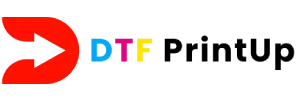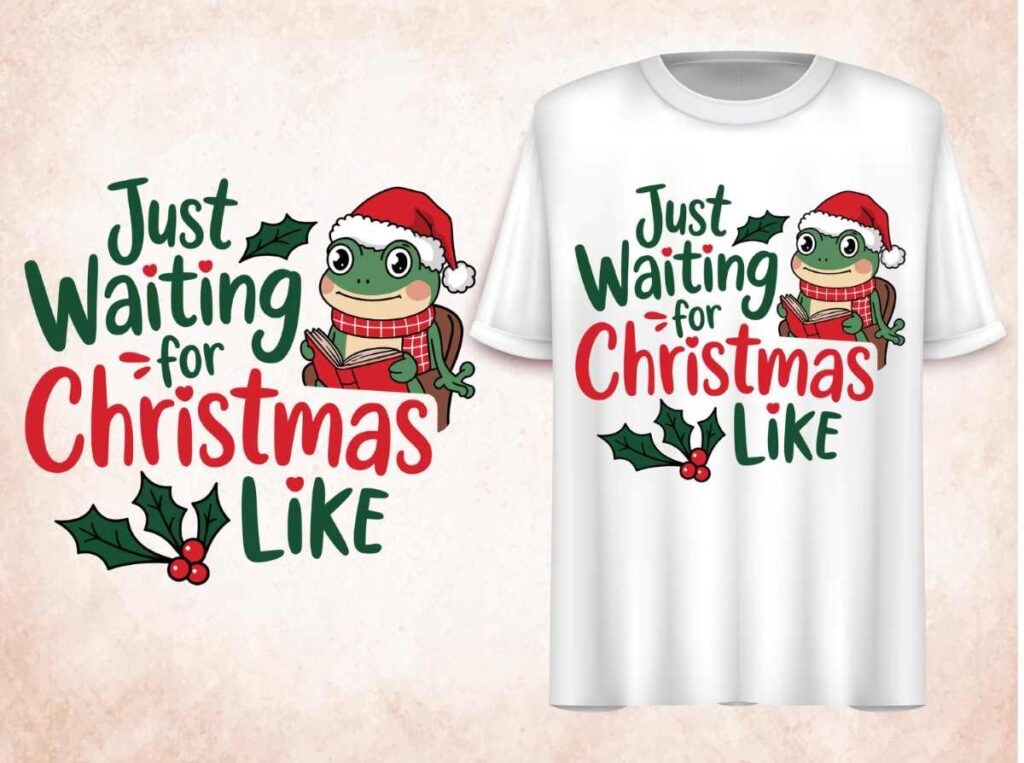In the fast-paced realm of fabric customization, DTF printing, or Direct-to-Film printing, is emerging as a game-changing technology that transforms how we create custom apparel. This innovative printing method not only offers vibrant colors and intricate designs but also caters to the rising consumer demand for personalized products. With its combination of efficiency and adaptability, DTF printing stands out in the competitive landscape of printing technology. As sustainability becomes a pivotal consideration for many brands, DTF printing incorporates eco-friendly practices that align with the values of today’s conscientious consumers. This article explores the profound impact of DTF printing on the future of fabric customization and its potential to redefine the industry.
In the dynamic landscape of fabric printing, Direct-to-Film printing, a method often referred to by its acronym DTF, is revolutionizing the way fabrics are personalized and designed. This contemporary approach to printing—rooted in advancements in technology—facilitates a seamless transfer of designs onto various textiles, making it an appealing choice for custom apparel production. As consumers increasingly seek unique styles to express their individuality, methods like film-based printing are gaining traction, offering unparalleled flexibility. Furthermore, the emphasis on environmentally responsible practices within printing technology mirrors the broader shift towards sustainable manufacturing, positioning solutions such as DTF printing as essential for future fabric customization. This introduction to DTF printing serves as a gateway into understanding its vast potential and the innovations shaping its trajectory.
What Makes DTF Printing Unique?
DTF printing, or Direct-to-Film printing, stands out because of its innovative approach to fabric customization. Rather than directly applying ink onto fabric, it transfers an image from a specially coated film. This method allows for intricate details and vibrant color reproduction that can be difficult to achieve with traditional printing techniques like screen printing or direct-to-garment printing. Because of its ability to accommodate various fabric types, including cotton and polyester, DTF printing provides unparalleled versatility for designers and brands looking to create unique apparel.
Unlike other printing technologies, DTF printing requires minimal setup, which is a significant advantage for small businesses or independent designers. The process is not only faster, allowing for quick turnaround times, but it also reduces the likelihood of errors that can come from intricate setup requirements. This ease of use makes DTF an appealing option for those entering the custom apparel market, enabling them to produce high-quality designs without needing extensive technical expertise.
Versatility of DTF Printing Across Fabrics
One of the most compelling aspects of DTF printing is its exceptional versatility with materials. DTF can be effectively used on a variety of fabrics, including cotton, polyester, and even fabric blends, making it suitable for an expansive range of applications—from fashion apparel to home décor items. This adaptability enables businesses to cater to diverse consumer needs and preferences, providing endless opportunities for creative expression through custom designs.
Furthermore, DTF printing offers the ability to produce intricate designs with complex color gradients and fine details. This characteristic is particularly advantageous for brands looking to differentiate themselves in a crowded marketplace. Whether creating custom t-shirts, hoodies, or promotional merchandise, the wide array of fabric compatibility ensures that almost any design can come to life in vibrant detail.
Cost-Effectiveness of DTF Printing for Small Businesses
In a competitive market, cost-effectiveness is crucial for small businesses, and DTF printing excels in this area. Unlike traditional screen printing that often requires high minimum order quantities to remain economically viable, DTF printing can be done efficiently even on smaller runs. This advantage enables independent creators to manage their costs effectively while still providing high-quality products to their customers.
By eliminating the need for extensive equipment and setup, businesses can invest more in creative processes and less in overhead. This democratizes the printing landscape, allowing aspiring entrepreneurs and small businesses to offer customized apparel without incurring prohibitive expenses. It paves the way for innovation and experimentation, as these businesses can take risks on new designs and trends that resonate with consumers.
The Role of Sustainability in DTF Printing
Sustainable printing practices are more important than ever, and DTF printing is no exception. This method incorporates eco-friendly inks and minimizes waste compared to its traditional counterparts, aligning with the growing consumer demand for sustainable products. As the textile industry faces increasing scrutiny over its environmental impact, DTF stands out as a responsible choice for businesses looking to adopt more sustainable practices.
By using less water and energy during the printing process, DTF technology not only reduces environmental footprint but also appeals to eco-conscious consumers. Businesses integrating sustainable practices in their production are likely to foster loyalty among consumers who prioritize ethical and environmentally friendly products, thus enhancing their brand image in a rapidly evolving marketplace.
Innovations Driving DTF Printing Forward
The landscape of DTF printing is continuously evolving, thanks to ongoing innovations that enhance quality and efficiency. Recent advancements in printing technology have led to faster print speeds and improved ink formulations, allowing businesses to produce high-quality designs at scale without compromising on durability or vibrancy. These innovations make DTF printing an appealing choice for larger-scale operations and bespoke design initiatives alike.
Additionally, research continues to focus on improving the color fastness and longevity of prints created through DTF technology. This commitment to innovation ensures that DTF printing remains competitive against other printing methods, drawing more industry players into the fold and fostering further developments in sustainable and high-quality fabric customization.
Envisioning The Future of DTF Printing in the Apparel Industry
As consumer behavior shifts toward personalization and customization, the future outlook for DTF printing appears robust. The technology’s versatility and efficiency make it a prime candidate for integration with digital platforms that allow for mass customization. This capability allows consumers to engage actively in the design process, strengthening their connection to brands.
Moreover, as e-commerce continues to dominate retail, linking DTF printing with online design tools could revolutionize how custom apparel is produced and purchased. Retailers offering these services could enhance customer experience while driving sales, ultimately positioning DTF printing as a key player in the evolution of the modern apparel landscape.
Frequently Asked Questions
What is DTF printing and how does it work?
DTF printing, or Direct-to-Film printing, is a modern fabric printing technology where designs are printed onto a special transfer film that is then applied to fabric using heat and pressure. This method combines advantages from both traditional screen printing and digital printing, enabling vibrant colors and detailed designs with quicker setup times.
What are the main benefits of DTF printing for custom apparel?
The main benefits of DTF printing for custom apparel include its versatility across various fabric types, exceptional durability of prints that withstand washing, and cost-effectiveness particularly for small batch production. This allows businesses to offer unique and lasting designs without high overhead costs.
How does DTF printing support sustainable printing practices?
DTF printing supports sustainable printing practices by utilizing eco-friendly inks and generating less waste compared to traditional methods. This alignment with sustainability trends helps attract environmentally conscious consumers who prioritize sustainable fashion choices.
What materials can be used for DTF printing in fabric customization?
DTF printing is versatile and can be applied to a wide range of materials, including cotton, polyester, and their blends. This adaptability allows businesses to cater to diverse markets in the custom apparel sector effectively.
What recent innovations are shaping the future of DTF printing technology?
Recent innovations in DTF printing technology include faster printing speeds and enhanced ink formulations, focusing on color vibrancy and fabric adherence. These advancements are essential for businesses aiming to scale production while maintaining high quality and meeting consumer demands.
What trends are driving the popularity of DTF printing in the fabric printing market?
The rising demand for personalized and customized apparel is a significant trend driving the popularity of DTF printing. Its quick turnaround times and ability to produce individualized designs align well with contemporary consumer preferences for unique fashion items.
| Key Aspects | Details |
|---|---|
| What is DTF Printing? | An innovative process where designs are printed on transfer film and adhered to fabric using heat and pressure. |
| Advantages Over Traditional Methods | Versatility across materials, exceptional durability, and cost-effectiveness for small batch production. |
| Market Trends | Increasing demand for customized apparel and eco-friendly practices in the textile sector. |
| Recent Innovations | Advancements in technology leading to faster printing speeds and improved ink formulations. |
| Future Outlook | Projecting growth in the DTF printing market with a focus on personalization and integration with e-commerce. |
Summary
DTF printing is transforming the landscape of fabric customization, making it a crucial technology for brands and businesses alike. With its advanced process of printing designs onto transfer films that are then heated and pressed onto fabrics, DTF printing stands out for its ability to deliver vibrant colors and complex designs efficiently. The growing interest in personalized apparel equips DTF printing with tremendous potential to cater to the burgeoning market demand. Furthermore, its versatility across a variety of fabrics and the durability of its prints offer both creators and consumers a reliable solution for high-quality products. As we move forward, technological advancements and consumer trends will only enhance the relevance of DTF printing in the fabric customization industry, solidifying its importance in the years to come.



